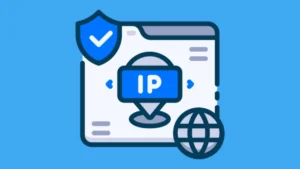In the dynamic world of technology entrepreneurship, building a Prototype or Minimum Viable Product (MVP) is a crucial step towards transforming an idea into a tangible and market-ready solution. This article explores the strategic approach to building a Prototype or MVP, emphasizing the importance of efficient testing, gathering valuable user feedback, and setting the stage for a successful product launch.
Understanding the Purpose
1. Defining a Prototype
A prototype is a preliminary version of a product, designed to test and validate specific features or functionalities. It serves as a visual representation that aids in communicating the concept and gathers initial feedback.
How Do I Start a Tech Business: A Comprehensive Guide
2. Introduction to MVP
A Minimum Viable Product (MVP) is a functional version of a product with the minimum features required to satisfy early adopters. The MVP allows entrepreneurs to test the viability of their idea in the market, minimizing development costs and maximizing learning opportunities.
Strategic Steps in Building a Prototype or MVP
1. Clearly Define Objectives and Features
Clearly outline the objectives of your Prototype or MVP. Identify the key features that need validation. This focused approach ensures that the development process remains streamlined and aligns with the overall vision for the product.
2. Select the Right Development Team
Choose a skilled development team with experience in building prototypes or MVPs. Collaboration with professionals who understand the iterative nature of development is essential for creating a successful and efficient product.
How to Market and Brand Your Tech Business
3. Iterative Development Process
Embrace an iterative development process. Build and test the prototype or MVP in incremental stages. This approach allows for quick adjustments based on feedback, ensuring that the final product meets user expectations.
Testing and Gathering Feedback
1. User Testing
Conduct thorough user testing to gather insights into the usability and functionality of your prototype or MVP. Act on user feedback to refine and enhance the user experience.
2. Data-Driven Decision Making
Leverage analytics and data to make informed decisions. Track user interactions, analyze patterns, and use this data to optimize the features and performance of your product.
Tech Business Planning and Strategy
Setting the Stage for Product Launch
1. Incorporate Learnings into Final Product
Use the feedback and insights gathered during the prototype or MVP phase to refine and enhance the final product. Incorporate the learnings into the development process to create a polished and market-ready solution.
2. Craft a Comprehensive Launch Strategy
Prepare a comprehensive launch strategy that considers market dynamics, target audience, and competitive landscape. Utilize the momentum gained during the prototype or MVP phase to create buzz and anticipation for the official product launch.
Ideation and Market Research in Tech Business
Conclusion: From Concept to Reality
Building a Prototype or MVP in the tech business is not just a developmental phase; it’s a strategic journey from conceptualization to reality. By following these steps, tech entrepreneurs can efficiently test their ideas, gather valuable insights, and position themselves for a successful product launch in the competitive tech landscape.



